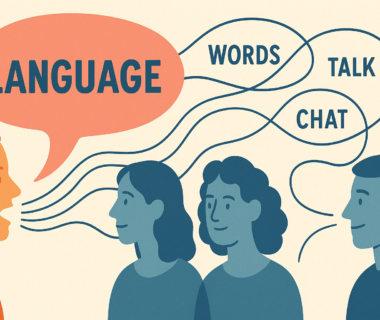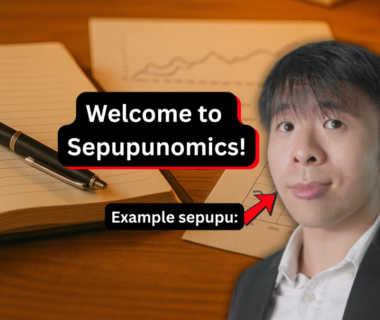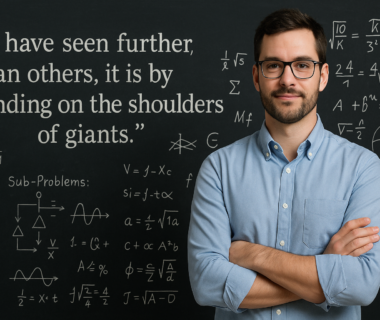One of the many things that I hear from students is a rather weird off-brand statement.
“I’m going to study science, I’m going to study engineering. English is so subjective! I can’t stand it!”, they go, as somehow they become the infinitely injured Sheldon Cooper science enthusiast language aphasia victim of the 21st century boo hoo hoo it’s time to retreat into the world of numbers and science experiments.
Internally, I can empathise.
Not because I feel infinite pity for the students’ divinely ordained nature, but rather because I recognize what they are doing as clear as day:
It is one of the millions of possible permutations by which a person can justify that they are hopeless at the English language.
Let’s be clear, writing is not easy. And some people are better at it than others. But that doesn’t mean that you should give up or make excuses. It means that you should level up and make use of your strengths.
With that in mind, here’s a case study for all of you out there who are a part of the premium memberships tier.
Writing like an engineer.
When I say that you write like an engineer, I do not mean that you bring in fancy terms, difficult vocabulary, or attempts to impress people. All of that is useless.
Rather than what I mean is that if your brain does not naturally take a prompt and then bring out line after line of beautiful prose, then maybe what you should do is learn how to systematize it like an engineer.
Almost any engineer realizes that problems such as building bridges or entire support structures designed to bear the weight of tens of thousands are inherently huge.
On an operational scale, there’s no way that they can be done by the labor of a single person. From a planning perspective, there’s no way that someone can just write a prompt into ChatGPT and poof, suddenly there is a bridge. Rather, it must be done step-by-step and methodically.
The question is though, which step comes first?
And there we see the problem that faces not only the engineer but pretty much any writer:
The problem of writing the first word, the problem of articulating the first full sentence, let alone the paragraph and even the essay.
Well, we all have problems but we solve them in different ways. So with that in mind, here’s an example of an engineer-style breakdown of an IGCSE writing prompt.
Describe a journey you took alone.
Engineer-style breakdown:
- Problem Definition: Convey the internal and external environment during solitary travel.
- Sub-Problems:
- Location and context: Italy, to participate in a competition.
- Atmosphere of solitude: loneliness vs. self-discovery.
- Sensory impressions: sounds, sights, temperature, time of day.
- Movement and transitions: what changes, how it feels.
- Design Considerations: Emotional tone must match environmental detail.
- Manifestation Strategy: Create a “motion-through-space” effect. Use the five senses as data sensors feeding into emotional state.
Here is the sample essay! (Premium only)
To view this content, please sign up for a membership!
If you haven’t signed up yet, make sure to
Join Now!
What happened there?
What happened is that I took an IGCSE writing prompt, read it, maybe freaked out for a while, but then spent a few seconds thinking about what I really had to do while thinking about the specific guidance of the prompt.
The problem definition I came up with was that on the surface I needed to write about a journey that I took alone.
That’s absolutely true, but at the end of the day since the goal is to showcase my English language skills I had to use a method that would help me convey those skills in a way that proved me to be an advanced user of the English language.
Clearly by thinking about what the definition of the problem was after processing the initial statement, I made it a little clearer what I had to do – But even then, it was still vague. What does it mean to convey an internal environment? And what does it mean to convey an external environment?
Confronted with that vagueness, I just broke things down even more into sub-problems that clearly articulate what it is that I need to accomplish in those 300-400 words, writing down things that I needed to think about while I am creating my work – which went something like…
I must convey the atmosphere of solitude.
I must depict the sensory impressions that I experience in the course of my journey, choosing the correct words to convey a scenario that I imagine in my head but may not have personally experienced.
I must use language to convey movements and transitions in order to articulate what I am experiencing on this journey to create a sense of vividity for the person who is reading the work to make them feel, simulate, to a high degree of accuracy what I was experiencing on this journey of which I speak to perfect fidelity.
I also add in a little bit about design considerations and manifestation strategy. I consider what I must do while I am writing as I am looking at the prompt. As a guide to what I must produce, along the way. With that in mind, I have a structure in place. A good scaffolding and I can now begin – and the scaffolding I used to make the essay above.
Here I think you can see the level of detail that goes into my thinking before I even write down a single word.
Why do that?
Because any engineering project requires a good scaffolding beforehand, and the foundation needs to be there – If I randomly start placing the blocks one after another, I will end up with a monstrosity of gargantuan proportions that serves no attainable function apart from being admired or vilified in a modern art museum.
At the end of the day, the whole point is to know what you’re going to say and when you are going to say it.
The structure grants you the gift of a little bit of spontaneity which you might not have had if you were just casually watching and waiting and hoping to just blindly go in.
Of course, a lot of people will do this, or they might just casually write out a few points here and there that they think that they’re going to expand upon and nothing else – But the fact is that writing out a few words alone isn’t going to really get you writing until you start actually having the sense of what is going to drive you forward and what you are trying to achieve.
That’s what writing like an engineer helps you to do, even if you think that it’s artificial, even if you think that it’s silly.
At the end of the day, though, this was just one method of many to help you resolve the problems that you may have with writing and articulating yourself on the journey.
If you are still thinking about making excuses and saying that you cannot write or anything like that, please disabuse yourself of that because that’s not the way to actually succeed – rather it is the way to convince yourself that you cannot do anything, even if that is patently untrue.
Good luck with figuring out what you need to do – and seeking the answers that you’re looking for!
Here are a few more prompts and breakdowns for you to think about as you go on your journey! Please give them a try and see how they work for you!
✍️ IGCSE Descriptive Writing Prompts
(Style: evoke atmosphere, vivid detail, sensory engagement)
1. Describe a journey you took alone.
Engineer-style breakdown:
- Problem Definition: Convey the internal and external environment during solitary travel.
- Sub-Problems:
- Atmosphere of solitude: loneliness vs. self-discovery.
- Sensory impressions: sounds, sights, temperature, time of day.
- Movement and transitions: what changes, how it feels.
- Design Considerations: Emotional tone must match environmental detail.
- Manifestation Strategy: Create a “motion-through-space” effect. Use the five senses as data sensors feeding into emotional state.
2. Describe a place that has changed over time.
Engineer-style breakdown:
- Problem Definition: Capture both the “before” and “after” vividly.
- Sub-Problems:
- Static vs. dynamic aspects (what stayed vs. changed).
- Emotional resonance with both versions.
- Time markers (weathering, human impact).
- Design Considerations: Keep continuity clear while emphasizing transformation.
- Manifestation Strategy: Two-layer model: past overlayed against present.
3. Describe a person you admire without stating who they are.
Engineer-style breakdown:
- Problem Definition: Show character without naming roles explicitly.
- Sub-Problems:
- Facial expressions, gestures, habits.
- Symbolic environment (clothes, tools, setting).
- Interactions with others.
- Design Considerations: Avoid clichés. Every description should infer values.
- Manifestation Strategy: Think of person as a ‘system’ with observable outputs (actions) revealing inner design (values).
4. Describe a moment of silence in a usually noisy environment.
Engineer-style breakdown:
- Problem Definition: Build contrast between noise and silence.
- Sub-Problems:
- Establish norm: noise, chaos, background activity.
- Introduce shift: sudden quiet.
- Explore impact: reflection, awareness, change.
- Design Considerations: Use sound as a measurable variable.
- Manifestation Strategy: Emphasize sensory reduction. Signal-to-noise ratio becomes almost zero—focus on minute details.
5. Describe an object that means a lot to you.
Engineer-style breakdown:
- Problem Definition: Represent emotion through physical detail.
- Sub-Problems:
- Physical features: material, shape, wear and tear.
- Historical context: when and how acquired.
- Emotional tie: memory, routine, symbolism.
- Design Considerations: Balance concrete description with layered meaning.
- Manifestation Strategy: Think of it like reverse-engineering—unpacking form to find significance.
🧠 IGCSE Narrative Writing Prompts
(Style: tell a story, with plot, characters, and conflict)
1. Write a story that begins with: “The lights went out, and everything changed.”
Engineer-style breakdown:
- Problem Definition: Sudden shift—instability introduced into a stable system.
- Sub-Problems:
- Setting pre-blackout: establish normality.
- Trigger: why the lights went out.
- Consequences: internal and external reactions.
- Design Considerations: Pacing and suspense must escalate.
- Manifestation Strategy: Treat it like a domino chain: one failure leads to a cascading sequence of problems.
2. Write a story about someone who makes a big mistake.
Engineer-style breakdown:
- Problem Definition: Human error with ripple effects.
- Sub-Problems:
- Motivation: what they wanted.
- The mistake: moment of failure.
- Fallout: consequences and attempts to repair.
- Design Considerations: Ensure logical causality. Every effect should trace back.
- Manifestation Strategy: Think of the story like a bug in the code—trace the origin and debug through consequences.
3. Write a story in which a character has to make a difficult decision.
Engineer-style breakdown:
- Problem Definition: A moral or strategic dilemma.
- Sub-Problems:
- Stakes: what’s at risk for both choices.
- Pressures: time, social, emotional.
- Resolution: choice made and aftermath.
- Design Considerations: Avoid false dilemmas. Real tension means no clear good/bad option.
- Manifestation Strategy: Treat as a branching path in logic flow—each branch has a cost.
4. Write a story about an unexpected discovery.
Engineer-style breakdown:
- Problem Definition: Create a contrast between expectation and revelation.
- Sub-Problems:
- Initial goal or task.
- Setting of discovery (mundane vs. mysterious).
- Nature of discovery: object, truth, emotion.
- Design Considerations: Must include reversal or shift in perspective.
- Manifestation Strategy: Story arc mimics a data revelation curve—steep insight after gradual build.
5. Write a story that ends with: “I knew things would never be the same again.”
Engineer-style breakdown:
- Problem Definition: Chart a fundamental change through experience.
- Sub-Problems:
- Status quo: character’s normal world.
- Catalyst event: what disrupts it.
- Final realization: new understanding.
- Design Considerations: Character arc must show growth or loss.
- Manifestation Strategy: Use a “feedback loop” metaphor—what input changed the internal system forever?




